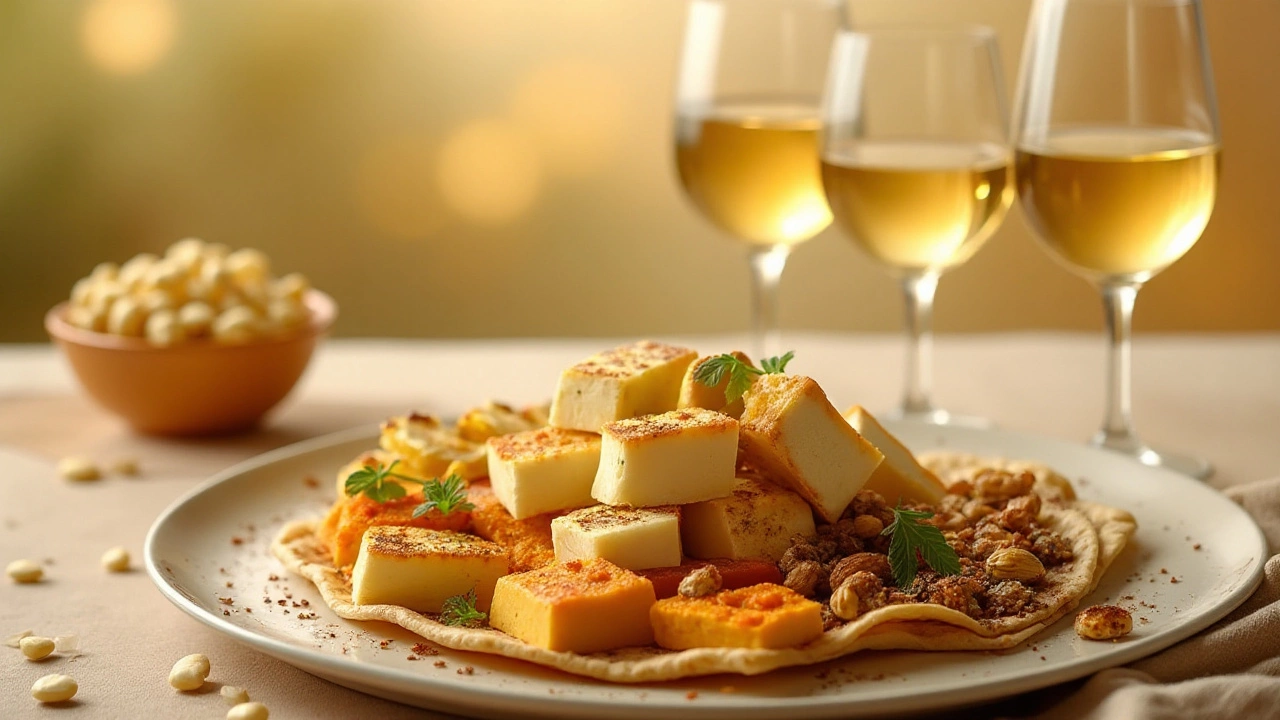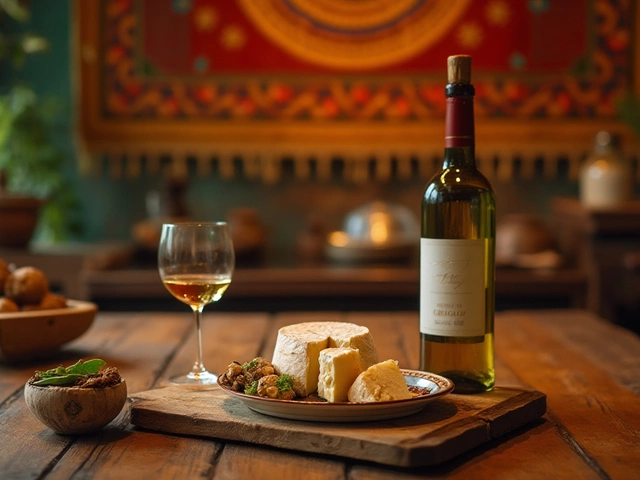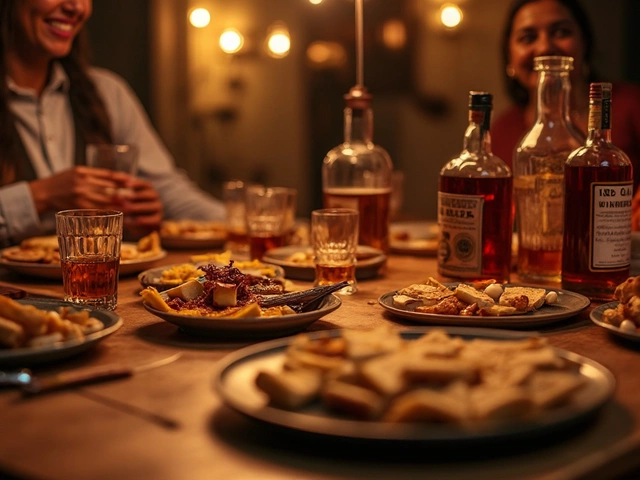
Pairing wine with cheese is an art—and when executed with panache, it can elevate your tasting experience to intoxicating heights. While red wine often gets the spotlight, white wine can be a revelation with cheese, offering subtle nuances and refreshing contrasts. It’s a bit like discovering a secret passage in a place you thought you knew every nook of. As we journey through this culinary landscape, you'll learn to appreciate the intricate dance of flavors that happens when these two elements are perfectly paired.
The key to a successful pairing lies in understanding the characteristics of both the wine and the cheese you're considering. White wine ranges from crisp and zesty to rich and aromatic, while cheese can be as diverse as it is luscious. Balance is crucial; a wine's acidity can cut through the creaminess of cheese, while its sweetness can bring out the savory notes in aged varieties. Each sip and bite can contrast or complement, creating a delightful harmony.
Whether you’re indulging with friends in a cozy gathering or treating yourself to a quiet evening in, these pairings can turn any occasion into a special event. By exploring both classic combinations and experimenting with lesser-known matches, you can find your own perfect symphony of flavors. Gather your glass, prepare your palate, and let's dive into the world of white wine and cheese pairings, where deliciousness knows no bounds.
- Understanding the Dynamics of Wine and Cheese Pairing
- Popular White Wine Varieties and Their Ideal Cheese Partners
- Tips for Successful Pairing
- Exploring Lesser-known Pairings
Understanding the Dynamics of Wine and Cheese Pairing
The age-old tradition of pairing wine with cheese is a delightful exercise in finding harmony and contrast. This tradition dates back centuries to when winemakers and cheese producers were rooted in the same European regions. The balancing act of white wines and cheese revolves around understanding flavor profiles and leveraging the complementary or contrasting elements that each brings to the table. Successful pairings hinge on a few basic principles that help highlight the best qualities of both. The interplay can range from intensifying the tangy notes of a goat cheese to softening the robust flavors of a pungent blue.
At the heart of effective pairing lies the concept of acidity, which acts as a backbone in many white wines. Wines like Sauvignon Blanc and Riesling showcase high acidity levels that help cleanse the palate, cutting through the creamy heft of cheeses like Brie or Camembert. This cleansing effect can refresh your taste with each sip, preventing palate fatigue and allowing the unique characters of the cheese to reintroduce themselves with each bite. Acidity is also a fabulous match for salty cheeses, where the wine’s briskness can elevate complex undertones. A study from the American Cheese Society emphasized how acidity and creaminess often work in tandem, enhancing depths of flavor while maintaining balance.
Matching Flavor Intensity
Matching the intensity of both wine and cheese is essential. Mild cheeses such as mozzarella or ricotta are best paired with delicate wines like Pinot Grigio or dry Riesling, which won’t overpower the cheese’s subtle characteristics. Alternatively, robust cheeses like cheddar or Gruyère demand wines with presence, such as a full-bodied Chardonnay. By aligning the intensity, each bite and sip remains harmonious without one overshadowing the other. Interestingly, many experts note that both wine and cheese display what’s known as terroir—a distinctive sense of place which can provide an additional layer of synergy when pairing local varieties. The notion that the geography of origin can influence taste might explain why regional pairings often succeed.
The secret to a magical pairing lies in balance—a dance of nuances where neither partner steps on the toes of the other. - Jane Cheese, International Wine Connoisseur
Tasting and Texture
The texture is another fundamental component of pairing magic. Cheeses with a creamy texture often pair beautifully with wines that boast a bit of effervescence or elevated acidity. This can transform a simple gathering into an elegant affair. The textural play extends to aged cheeses with crystalline structures; such cheeses may pair sublimely with a wine possessing a silky mouthfeel, like a wild Albarino. This textural harmony enhances the palatable pleasure, creating a synthesis of taste that is greater than its parts and offering a memorable experience that lingers long after the plate is clean.
Approaching wine and cheese pairing with curiosity allows you to learn through experimentation. As you try different permutations, you'll discover combinations that may defy conventional wisdom yet delight your senses. This is the true joy of pairing—the surprise and satisfaction of finding a match that’s uniquely appealing to you and your guests. The key is not to shy away from the unfamiliar or assume that tradition always knows best. After all, some of the best culinary discoveries arise from adventurous pairings that transcend expectations.
Popular White Wine Varieties and Their Ideal Cheese Partners
When it comes to pairing white wine with cheese, the choices are as varied as the dizzying array of cheeses themselves. Each white wine variety brings its own profile of flavors and aromas, which can either harmonize beautifully or clash discordantly with different cheeses. Exploring these pairings is akin to embarking on a gastronomic adventure, filled with vibrant tastes and unexpected discoveries. Let's embark on this attractive journey, starting with some popular white wine varieties and their ideal cheese companions. The crisp acidity of Sauvignon Blanc, for example, is a wonderful match for tangy goat cheese, as it cuts through the creamy texture and enhances the cheese's inherent earthiness. This combination is often described as a classic pairing, offering an explosion of flavors that dance on your palate.
So, imagine a sunlit afternoon, a baguette in hand, paired with a chilled glass of Chardonnay; this scene might evoke thoughts of ripe Brie. Chardonnay's buttery, toasty notes beautifully echo the rich, creamy textures of soft-ripened cheeses like Brie or Camembert. These cheeses, with their bloomy rinds and velvety centers, find an elegant companion in the slightly oaky, slightly citrusy dance of a well-crafted Chardonnay. The balance is delicate, yet it is precisely this interplay that makes the experience unforgettable. As you savor each bite, sense how the wine's acidity enlivens the cheese's lush texture, crafting a delightful theater of flavors on your tongue. This is a combination best enjoyed slowly, allowing each mouthful to linger as you explore the depths of its flavors.
The story doesn’t end there; wine and cheese is a world full of possibilities around every corner. Consider then the fragrant, heady aroma of Gewürztraminer, with its notes of lychee and rose, which beckons for the robust and aromatic Munster cheese. Often associated with Alsace, this match is a festival of sensory delight, with each taste revealing nuances that were previously hidden. Gewürztraminer’s sweetness and boldness tackle the intense flavors of Munster, striking a balance often described as theatrical. Why not experiment with a slice of this aromatic cheese alongside a floral glass of Gewürztraminer the next time you fancy a daring pairing?
For a spice-laden adventure, look towards Riesling—a wine that rides the spectrum from dry to lusciously sweet. This German classic complements pungent blue cheeses like Roquefort or Stilton. Riesling's bright acidity and sweetness mingle with the salty tang of blue cheese, creating an electrifying contrast and harmony in flavor. If you need another reason to try this combination, know that it comes with a long tradition of pairing, one that has delighted palates for centuries. It’s a journey through taste that you won’t soon forget, a testament to the magic that can happen when the wine and cheese are perfectly in sync.
As Julia Child wisely noted, "Wine is meant to complement food and bring out the best flavors." This wisdom certainly holds true when reveling in a well-crafted pairing of white wine and cheese.
How about a frisky sip of sparkling wine like Prosecco? This effervescent delight pairs elegantly with the creamy tang of Italian cheeses such as Pecorino or Gorgonzola. The bubbles dance across your tongue, leaving behind a tantalizing effervescence that contrasts with the cheese's creamy heft, creating a lively and vivid interplay. This pairing isn't just a feast for your taste buds, but also an exercise in pleasure, capturing the very spirit of Italy in each delicate bite and bubbly sip. Whether you're toasting to joy or savoring a serene moment, these pairings promise a festive celebration of taste and texture.
Each combination tells a different story, shaped by locales, traditions, and shared pleasures. As you delve deeper into these wine and cheese pairings, remember that personal preference is your guiding star. Explore fearlessly, as each tasting can lead to new revelations. Whether it's the citrusy notes of a Pinot Grigio or the opulent spices of a Viognier, there's a white wine companion for nearly any cheese you can dream of. Keep your senses open, and let this culinary journey captivate you.
| White Wine Variety | Cheese Pairing |
|---|---|
| Sauvignon Blanc | Goat Cheese |
| Chardonnay | Brie |
| Gewürztraminer | Munster |
| Riesling | Roquefort |
| Prosecco | Pecorino |

Tips for Successful Pairing
Embarking on the journey of pairing white wine with cheese is a delightful exploration of taste and texture. It's about understanding what you enjoy and how different elements can complement each other. The first tip is to consider the weight of both the wine and the cheese. Lighter wines like Sauvignon Blanc tend to pair well with fresher, less dense cheeses such as goat cheese or mozzarella. They have a crispness and acidity that can balance the soft creaminess, creating a clean, refreshing finish on the palate.
On the other hand, richer white wines like Chardonnay are often best enjoyed with cheeses that have more pronounced flavors, like aged cheddar or Gruyère. These wines carry more body and buttery notes, matching the intensity and complexity of well-aged cheeses. It’s fascinating to see how the wine's oakiness or hints of vanilla can mesh with the savory umami in a cheese, making every bite and sip an experience.
Don’t shy away from experimenting with the flavors of wine and cheese. Sweet wines like Riesling or Moscato can wonderfully counteract salty cheeses such as blue cheese or Roquefort. The interplay between salty and sweet can be quite magical, with each enhancing the other in unexpected and gratifying ways.
"Pairing wine with cheese doesn't have to be daunting, you just have to be curious and willing to try different combinations," says wine expert Anne-Marie Tearney in her column on Epicurean Adventures.
Temperature also plays a crucial role. Serving wine too cold can often mute its flavors, so striving for something close to cellar temperature is ideal. The cheese, too, should not be served straight from the fridge. Allowing it to come to room temperature can release its full aroma and texture, ensuring that your pairing is as flavorful as possible.
Pay attention to regional pairings. Often, wine and cheese from the same region will have evolved together, naturally marrying well. Take a Loire Valley Sancerre paired with a French chèvre, for example. These classic combinations have stood the test of time for good reason, providing everything you’d hope for in a harmonious tasting experience.
Lastly, let personal preference guide you. What you enjoy might not conform to classic or suggested pairings, and that is perfectly fine. The beauty of pairing wine and cheese is in the endless possibilities and personal discoveries. Each gathering or tasting count as a new chapter in your own flavorful story.
Exploring Lesser-known Pairings
While the classic matches of brie with Chardonnay and goat cheese with Sauvignon Blanc often steal the show, we're venturing into a treasure trove of lesser-known pairings that can truly amaze and delight you. These combinations might not be on the tip of every foodie’s tongue, but they promise a symphony of flavors that dance on your palate and leave you yearning for more. Let's face it, sometimes the best flavors are found off the beaten path, hidden like secret gems only whispered about among gourmets.
One intriguing match to explore is the unexpected harmony between a crisp Vermentino and a creamy taleggio. Vermentino, with its citrus zest and breeze-like freshness, cuts through the plush, buttery texture of taleggio like a breath of fresh air. The combination elevates both to new heights, turning an ordinary wine and cheese night into an exploration of newfound territories. Think of it like a duet where each voice shines through yet melds seamlessly, offering crescendo after crescendo of unexpected notes.
Consider the elegant Riesling with a bold blue Stilton. While Riesling is often paired with lighter cheeses, in this context, its vibrant acidity and hint of sweetness contrast beautifully with the rich, pungent flavors of the Stilton. It’s a study in contrasts, where sweet meets salty, and each sip of wine seems to coax hidden layers from within the cheese. If you want a pairing that challenges preconceptions while delivering immense satisfaction, this is it. When individuals as diverse as Keats and Poe found common ground in their love for metaphor, so too shall these pairings surprise and delight.
An off-the-wall but incredibly enjoyable combination is an oaky Viognier with a delicate fresh mozzarella. Viognier, known for its complex bouquet of floral and peach aromas, might appear as an odd partner for mozzarella, famed for its simplicity. Yet, when combined, they dance together in an unexpected waltz where each step reveals subtleties and nuances of their characters. The wine's oak notes lend depth and complexity, whilst the mild mozzarella serves as the perfect canvas, allowing the wine's flavors to flourish.
Statistically, up to 70% of people state they would stick to familiar pairings during wine-tasting events or gatherings, often not realizing the adventures they miss out on by not trying something new. This means that exploring these lesser-known pairings is not just an indulgence—it’s a way to stand out, show bravery in your selections, and perhaps start a new trend among your friends.
In the words of celebrated sommelier Jancis Robinson, “Experimentation in pairing can lead to personal discovery and delight,” she said, adding that “a well-planned pairing can turn a meal into an experience.” Such wonderful wisdom holds true as we explore this wondrous and sometimes wild world of wine and cheese combinations. So here’s to the brave, the bold, and the curious—pull the cork, unwrap the rind, and taste something extraordinary today.





Categories